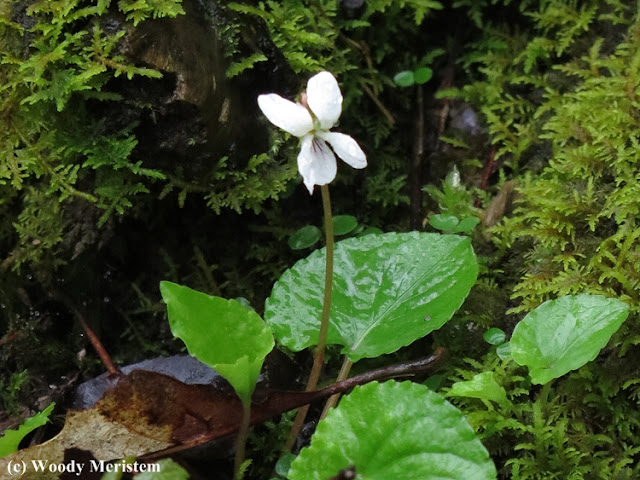One week, seven days – only one week among many.
There was nothing really special about those seven days in May, just an average week
in forest and field – a week to see and experience the natural world in
northcentral Pennsylvania.
Day 1 –
Walking in the rain – everything dripping wet, including me. The Big Woods were
quiet except for the drip, drip, drip of the rain and the sound of a nearby brook. Next
to a decaying log several sweet white violets were in bloom –
Day 2 – Still
raining. In the ravine of a small stream a profusion of purple trillium were in
bloom. But the flower on one of those purple trilliums wasn’t purple, it was a
yellowish-white (or whitish-yellow if you prefer). A small percentage of purple
trillium produce white or yellow flowers, they’re few and far between and it’s
always a treat to find one.
Unfortunately, this flower was past its prime, but
still a great find –
Day 3 –
Walking along the border between a hayfield and woodland I came across a black
rat snake; a large one, about 5 1/2 feet long, one of the largest I’ve ever
seen. The snake quickly assumed a defensive posture: widening its head and
body, rearing back as if to strike and rapidly vibrating its tail producing a
sound resembling that of a rattlesnake. The snake crawled rapidly toward the
woods and smoothly ascended the low-hanging branches of a shrub to lie on a
horizontal stem.
Day 4 – Heavy
rains during the last few days brought a sudden flush of fungal fruiting bodies
including some interesting mushrooms. There are a number of species of
mushrooms collectively lumped under the common name of “inky caps”. On this
damp day there was an abundance of small inky caps in the mulch along a
wooded path –
Day 5 – The
rains have finally abated and in a hayfield a beautiful orange and black butterfly
visited one dandelion after another. It was one of the large group of similar-appearing
butterflies called fritillaries. Comparing the photographs to illustrations in
a field guide revealed it to be a silver-bordered fritillary –
Day 6 – Today
I walked along the edge of a small wetland where a male Carolina saddlebags dragonfly was
perched on a dead plant stalk. It made periodic forays to chase off another
male that was regularly encroaching on the 25-30 feet along the edge
of open water it had claimed as its own. Carolina saddlebags are usually
considered “flyers”, spending most of the day on the wing, but this male
repeatedly returned to the same perch.
Day 7 – Rain
again, virtually all day long. Raindrops hung from needles of the white pine,
the fresh green leaves on the trees and shrubs, and the twigs of the apple
tree, the drops reflecting the scenes around them. Almost four inches of rain fell at the house that week and the streams were bank-full after
a winter of little snow and dropping water levels.
There’s always variety in the natural world
– all we have to do is look.




















